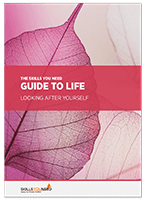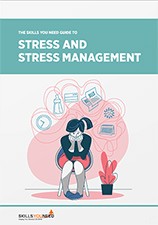Mindfulness
See also: Relaxation TechniquesWhat is Mindfulness?
Put simply, mindfulness is awareness of the present moment and circumstances.
The concept of mindfulness is Buddhist in origin and can be defined in many different ways in modern society: for example, as a kind of mental attitude that one may adopt, or a set of techniques that can anchor a person's consciousness in the present.
People think many thoughts at once and many of them are concerned with the past, or the future, or abstract things.
Being mindful means keeping your mind on the here and now. This can be very calming, allowing worries and regrets to be left alone, especially when it is the focus of meditation.
Mindfulness is currently frequently discussed in the media as a treatment for many things, including serious anxiety and depression, chronic pain, and feelings of being overwhelmed by modern life, stress relief.
However, being mindful is not always easy, and mindful meditation in particular needs regular practise to become effective.
How Mindfulness Became Fashionable
Jon Kabat-Zinn is an American molecular biologist who was introduced to Buddhism as a student and realised that the concept of mindfulness could have immense use in reducing stress.
He developed a course called Mindfulness-Based Stress Reduction (MBSR) at the University of Massachusetts and become known worldwide after his first book, Full Catastrophe Living: Using the Wisdom of Your Body and Mind to Face Stress, Pain, and Illness (Delta, 1991), was published.
His programme famously included an exercise based on eating a raisin: a very simple task but performed with intense focus and concentration that puts all other thoughts aside.
How can I be 'Mindful?'
One might choose to be mindful in daily life simply by paying attention to current tasks, but mindfulness is usually associated with doing so with a particular attitude of curiosity, openness and acceptance. That way you can be open to your actual experience, free of preconceptions and without being distracted by your reactions to it.
Mindfulness is at its most acute when one is focussing one's mind entirely on it: such a state of mental focus being described as meditation. Meditation is sometimes described as 'falling awake' as a contrast to falling asleep.
Meditation can be classified as concentration meditation, where there is one particular focus, such as a sound, or as mindfulness meditation where the focus is on all aspects of the present moment.
However, complete awareness of the present is very often easier to achieve by paying particular attention to one aspect of it, at least initially, so the two kinds of meditation are intertwined.
The movement of breath into and out of the body is a very popular initial focus of attention in mindful meditation as it is always present and involves just enough bodily movement to keep one interested.
Some people prefer a repeated silent phrase (called a mantra), or a set of rhythmic, simple movements, or enjoy being guided through a meditation by verbal instructions and reminders from a teacher or an audio track. Many guided meditations are available online and there are also a number of apps that are readily available.
Many religions use meditative states as a tool, from the contemplations of Christian monks and nuns to the whirling dervishes found within parts of Islam. However, the practice of meditation can also be completely secular. Generally people sit quietly on an upright chair so that they are relaxed but alert, but you can meditate lying down, sitting on a bus or even walking.
Further Reading from Skills You Need
The Skills You Need Guide to Stress and Stress Management
Understand and Manage Stress in Your Life
Learn more about the nature of stress and how you can effectively cope with stress at work, at home and in life generally. The Skills You Need Guide to Stress and Stress Management eBook covers all you need to know to help you through those stressful times and become more resilient.
What can Mindfulness be Helpful For?
The mental and physical state that mindfulness brings about can be helpful in treating many diseases since stress is a key factor in everything from heart disease to bipolar disorder.
Mindfulness also helps many people who are not 'ill' but feel that they could be living a happier and more meaningful life.
However, there are two particular conditions that mindfulness can have a particular impact upon:
1. Depression
When we are depressed, our negative thoughts and negative moods become intertwined.
We feel awful, we think we are a terrible person or that everything is going to be awful, and that makes our mood even worse. A downwards spiral is very easy to get into, especially if you have been depressed before, and we gain no pleasure from the things that usually cheer us up, and nor can we see anything in perspective.
See our What is Depression? page for more insight into this illness.
Mindfulness helps to halt the escalation of the negative thoughts associated with depression and teaches us to focus on the present moment, rather than reliving the past or being concerned about the future.
Mindfulness can help us experience the world directly and without judgement. We may notice that we are feeling awful but we accept it, rather than trying to fight it, or let it worry us, and we do not panic. Hopefully, a depressed state can be avoided in this way or at the very least accepted: people with depression very often feel guilty or anxious about being depressed and that makes it worse.
These techniques are sometimes called Mindfulness-Based Cognitive Therapy or MBCT.
2. Chronic Pain
People who are in chronic pain have got stuck there because their brain became attuned to pain during an original painful condition.
So, even though they are healed from a physical perspective, their brains are so well wired to feel pain that they take a lot of convincing that the body is not, in fact, under any threat.
Sufferers are usually trapped in a cycle where they have a good day, do too much, and then have a bad day or several of them, a process known as activity cycling.
The 're-wiring' of the brain needed is usually done by the sufferer staying well within their limits and then gradually increasing their level of activity. Paradoxically, it is also very important to exercise the body gently so that the brain stops 'being afraid' of certain areas.
Sufferers usually attempt to hold a painful area rigidly so that it never moves, and the clenched muscles that result can just cause more pain!
Mindfulness means that the sufferer is firstly aware of their pain, and then accepts it, rather than worrying that they are hurting and not going to be able to do something later on.
It also means that suffers are aware when they need to rest and do not push themselves too hard, and thus avoid activity cycling. This process is not easy and chronic pain programmes generally do not result in a complete absence of pain.
However, sufferers generally find that they manage their pain much better and enjoy life far more as a result. Vidyamala Burch has written widely on this subject and her 'Breathworks' programmes, which rely heavily on mindfulness, have helped many thousands of people.
Many organisations, such as companies, hospitals and schools, are becoming aware that mindfulness training is of great help to their employees and their clients.
Try experiencing the many benefits of mindfulness for yourself by just taking a few quiet minutes to breathe slowly and notice little details around you.
Continue by reading our pages on Positive Thinking and Relaxation Techniques and, if you wish to develop your mindfulness, try these simple exercises.


